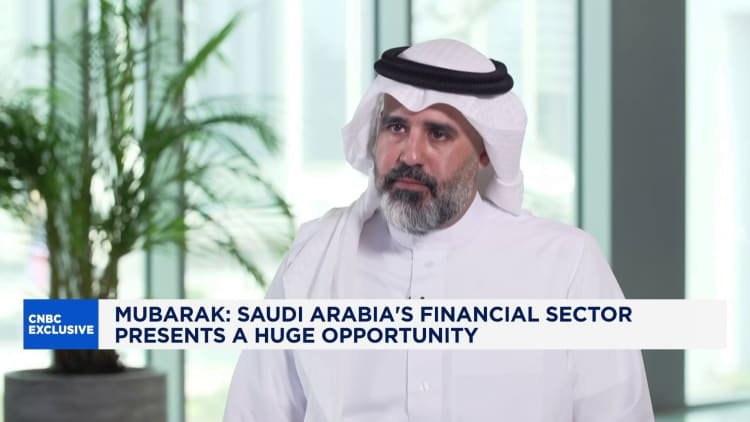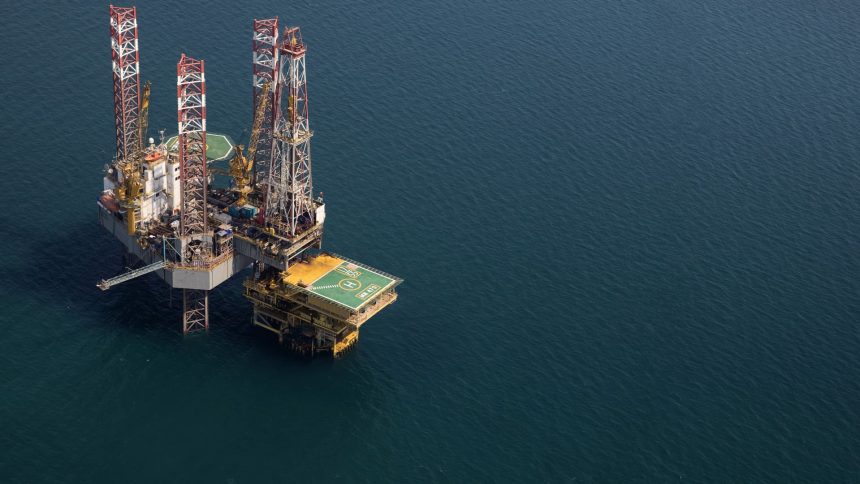Saudi Arabia has a superpower. Not only is it the largest exporter of crude oil in the world; its production costs for oil projects are also the lowest in the world, at around just $10 per barrel. When around 75% of your fiscal revenue comes from oil, that’s a big deal.
And for a time, its fiscal breakeven oil price — what it needed a barrel of crude to cost in order to balance its budget — was fairly comfortable, too.
That’s changing as the kingdom embarks on huge spending projects as part of Vision 2030, which aims to modernize its economy and diversify its revenue sources away from oil. With each passing year, that projected breakeven oil price gets higher, and the kingdom’s deficit widens.
In May of 2023 the International Monetary Fund forecast the kingdom’s breakeven oil price at $80.90 per barrel, which moved it back into a fiscal deficit following its first surplus in nearly a decade. The Fund’s latest forecast, in April, put that figure at $96.20 for 2024; a roughly 19% increase on the year before, and about 32% higher than the current price of a barrel of Brent crude, which is trading at around $73 as of Wednesday afternoon.
“At least until 2030, Saudi will have massive budgetary needs due to the need to demonstrate some significant outcome in key Vision 2030 projects and to prepare for and host big sporting and cultural events” like the World Cup 2034 and Expo 2030, said Li-Chen Sim, a non-resident scholar at the Washington-based Middle East Institute.
“All this amidst expected growth in oil supply from the U.S., Guyana, Brazil, Canada, and even the UAE and possible anemic oil consumption growth in China, the Kingdom’s largest oil customer, means that the Kingdom’s fiscal breakeven price is likely to rise perhaps to around $100.”
All that, she adds, does not include the domestic spending requirements of the kingdom’s mammoth sovereign wealth fund, the Public Investment Fund, which is behind multi-trillion dollar megaprojects like NEOM. A Bloomberg forecast cited by Nomura Asset Management put this year’s breakeven price, including PIF spending, at $112 per barrel.
“Saudi Arabia is wealthy and government spending has climbed rapidly over the past decade but it has fiscal parameters within which it must operate just like every other country,” a Nomura report on Arabian markets published Sept. 2 read.
Important economic indicators “like oil production and prices, are now flashing warning signs,” it added. “A global slowdown amid supply uncertainties may hamper prospects for hydrocarbon economies.”
Does the breakeven oil price actually matter?
But wait — fiscal breakeven prices are not always as important as people think they are, some economists and market analysts argue. And for Saudi Arabia, a range of options exist to manage deficits and less-than-ideal oil prices.
“The reality is that countries run deficits all the time, and therefore the idea Saudi Arabia needs $112 oil, or whatever the number is, to me doesn’t provide a true representation of what’s going on,” one energy analyst who focuses on the kingdom told CNBC.
“For Saudi Arabia, they have a lot of capacity to take on more debt if they wanted to … it’s not an issue for them to run a small deficit,” the analyst said, speaking anonymously due to professional restrictions on speaking to the press.
The kingdom also has robust foreign currency reserves, which grew to a 20-month high of $452.8 billion in July, and has been successfully issuing bonds, tapping debt markets for $12 billion so far this year. Oil revenue should increase in 2025 when the OPEC+ production cuts, the majority of which were taken by Saudi Arabia, expire, according to energy analysts.
“From that perspective, they’re also starting from a relatively strong position,” the source said.
Saudi Arabia’s public debt has grown from around 3% of its GDP in the 2010s to 24% today — that’s a massive increment, Sim said. But by international standards, it’s still low. Average public debt in EU countries, for instance, averages 82%. In the U.S. in 2023, that figure was 123%.

Its relatively low debt level and high credit rating makes it easier for Saudi Arabia to take on more debt as it needs to. The kingdom has also rolled out a series of reforms to boost and de-risk foreign investment and diversify revenue streams. While the country’s economy has contracted for the last consecutive four quarters, non-oil economic activity grew 4.4% in the second quarter year-on-year, up 3.4% from the prior quarter.
“The good news is that the economy is progressing along its diversification track and has already absorbed large reductions in subsidies and higher VAT while generating a huge number of jobs,” the Nomura report said.
While the kingdom “still lacks the quantum of foreign direct investments desired,” it wrote, “the newly approved investment law should bring it closer to achieving its goal of building a substantially bigger non-oil sector.”
Risks remain, however — primarily if oil demand continues to be soft in major consuming countries and crude supply in non-OPEC+ countries continue to grow, Sim said. And those risks are entirely out of Saudi Arabia’s control.
“With regard to the first point, the biggest danger is a possible tit-for-tat tariff war between China and the US or Europe,” Sim said. This “could result in slower global economic growth and hence a reduced demand for oil.”
Read the full article here



